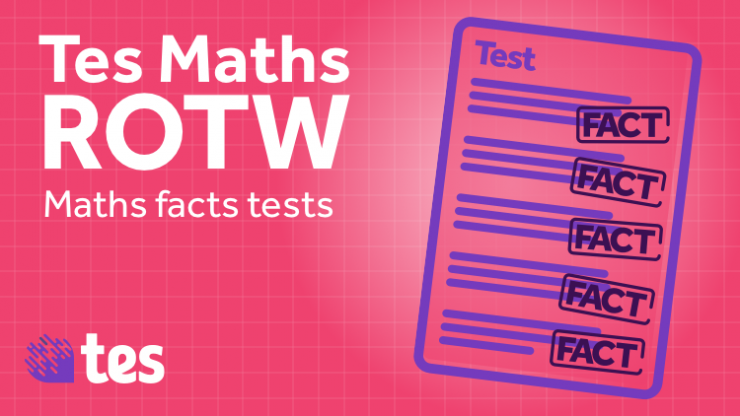To see all of the work I do for TES Maths, including Resource of the Week, Inspect the Spec, Pedagogy Place, Maths Newsletters and Topic Collections, please visit the TES Maths Blog here
What is it?
There is little doubt students knowing certain “facts” in maths – such as what the interior angles of a triangle add up to, or the value of 3 cubed – is a good thing. In the language of cognitive science, having these facts automated means that there is plenty of working memory capacity spare the process and successfully solve more complex problems that involve these facts. However, exactly how we help students acquire these facts is very much up for debate. Clearly it is beneficial for students to understand how to derive these “facts” for themselves. However, I am also of the belief that sometimes simply committing a fact to memory, and subsequently enjoying some success with it, is a key part of mathematical development, and can actually help students better understand the derivation at a later date. So whilst some people may view the teaching of these facts as “drill and kill”, I prefer to label the process as “drill and thrill”, for this wonderful resource that is full of such maths facts can be used in a fun, engaging way that should prove very beneficial to students.
How can it be used?
The resource is set up like a spelling test. One sheet of paper consists of the facts students need to learn, and the other sheet has these facts but with key pieces of information missing. So, students learn the fact, and then test themselves. And it is this process of self-testing that is the key. Reading over notes feels comfortable and familiar – “oh yeah, sir, relax! I know this”. However, it is only when students self-test, and actually have to fill in the key material themselves, do they start to really commit these things to memory. These wonderful sets of maths facts could be stuck in students books, or used to form knowledge organisers. They can then be accessed by students in tutor time, or if there are 5 minutes spare at the start of a lesson, to develop the all-important habit of self-quizzing. Or students could test each other. Heck, the whole family could get involved! I love this resource.
Thanks so much for sharing
Craig Barton
Download: Maths Facts
View the author’s other resources
